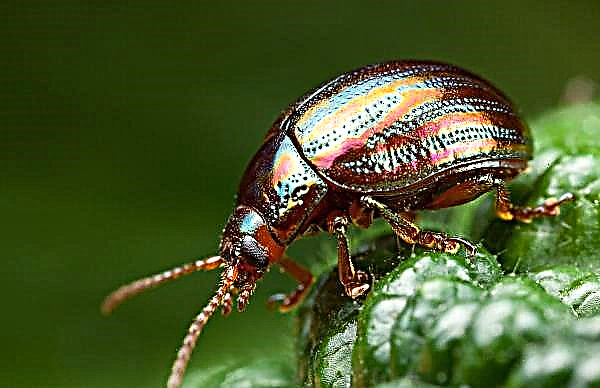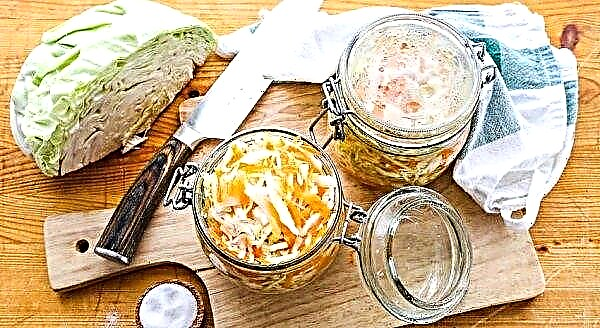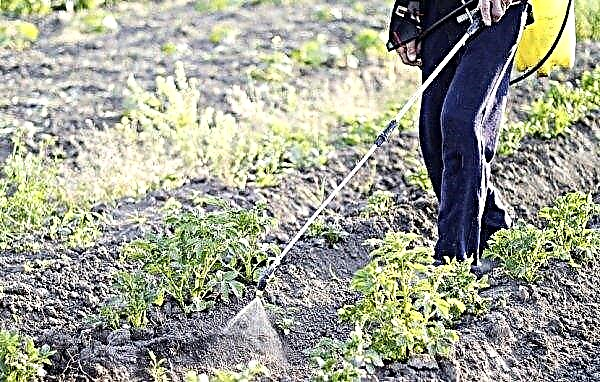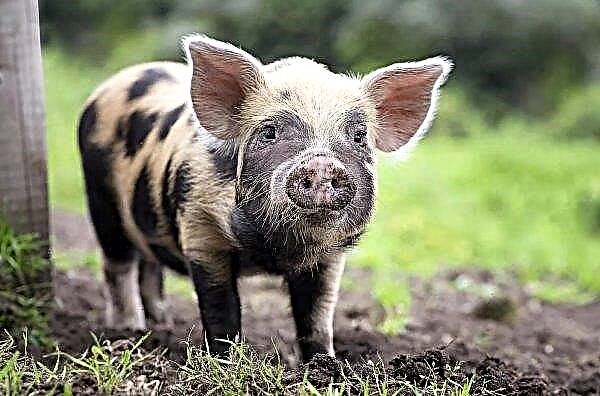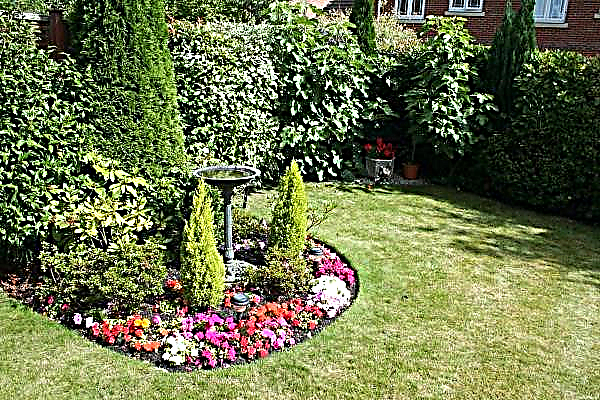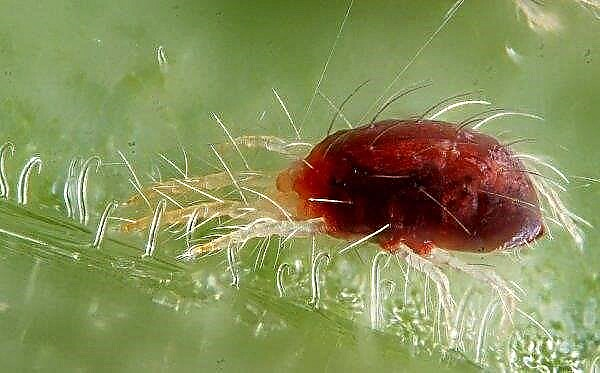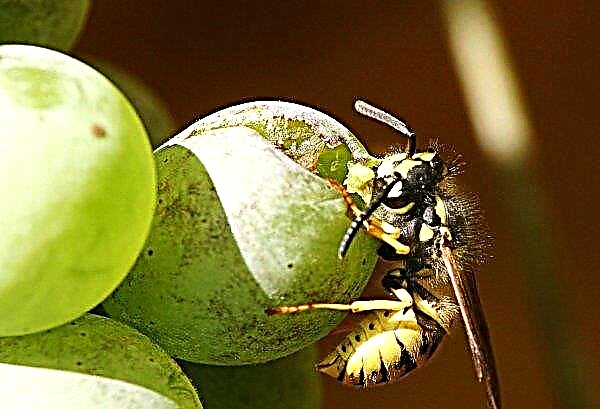Many people want to decorate their garden or cottage. Coniferous, or more precisely, false Lavson cypress of Snow White variety (Snow White) will become assistants in this matter. Read more about the plant and the rules for growing it below.
Botanical Description
Lawson cypress Snow White (Chamaecyparis Lawsoniana Snow White) is a variety of dwarf evergreen shrubs belonging to the Cypress family. The shape of the crown resembles a column, the structure is similar to thuja. Skeletal branches are dense, and the branches are short and thin, with brown-green bark. The shoots of the plant are straight, looking down a little.
The variety is considered to be slow-growing, because in a year it adds up to 6 cm. The needles are multi-colored, bright green prevails, and a golden frame appears in spring and autumn. The cones of the cypress are ovoid or round in shape, inside of which there are seeds used for reproduction.
Due to the fact that the branches are connected to the trunk, forming an acute angle, a number of advantages appear:
- density and density of needles;
- regular oval shape;
- symmetry.
Did you know? Lavson shrub can reach a mark of 5 m in height only after 23 years.
Origin of name
Snow White literally translates as "Snow White." The variety received its name at one of the universities in Oregon, where it was bred. Comparison with the main character of the cartoon of the same name happened due to an unusual crown: the main color varies from bright green to faded blue, and towards the beginning of autumn the tips of the needles become creamy white.

Landing
In order for the cultivation of the crop in question to be successful, it is necessary to choose the ideal place on the site. For planting shrubs, preference should be given to sunny areas, but partial shade will be acceptable. One of the prerequisites is protection against drafts and strong gusts of wind.
Did you know? Conifers appeared in the Carboniferous period (about 370 million years ago), and at that time they grew mainly in the northern hemisphere.
Step-by-step instructions for landing in open ground:
- Dig a landing hole so that the earthen lump fits freely, having another 2-3 cm in reserve.
- Pour the resulting pit with water, and the seedling with a special Kornevin solution based on the consumption of one package of the drug per 5 l of water.
- Place the treated planting material in the center of the hole, carefully and gradually filling it with a mixture of fertile soil with 300 g nitroammophoski.
- Given that the planting settles, place the rhizome so that the neck is 15–20 cm above the ground.
- At the end, pour planting material with water.
- When the landing site has settled, add a little more earth so that the neck aligns with the surface of the site.
- Mulch the soil around, tie the seedling to the support.

At home, the bush is planted in flowerpots or special containers at any time of the year, but the most successful time will be the beginning of spring or August - mid-September.
How to do it:
- Drain holes in the selected container must be covered with expanded clay, sea pebbles or crushed bricks.
- You can buy the finished mixture for conifers or mix garden soil with manure, peat and sand in a ratio of 2: 1: 1, adding 1 tbsp. l complex mineral fertilizer. Stir thoroughly until smooth.
- Pour a layer of prepared soil about a third of the entire height of the container or flowerpot, make a small depression there and pour water.
- Put a root ball in the hole.
- Pour out the remains of the substrate, pressing it to the rhizome, and then ram it with a spatula.
- To water.

As a drainage material, small remains of old ceramic dishes can be used. Taking a large capacity of about 30-50 liters, you can not change the location of the cypress in the future for 3-4 years.
Care
Recommendations on the care procedure directly depend on the method of cultivation - Snow White, like pea shrubs, can be cultivated both in open ground and indoors.
Watering and feeding
At room conditions, watering the plant is necessary every week. Keep in mind that it is sensitive to dry air, therefore, in the colder period of the year, when heating is turned on, regular spraying is also added.
Growing Snow White in the open ground, the gardener should know that the bush is unpretentious in maintenance, the main condition is frequent abundant watering and spraying, especially on dry and hot days. When the cypress cover for the winter, there is no need for watering.
 When the room temperature reaches + 8 ° C, watering is done every 8-10 days.
When the room temperature reaches + 8 ° C, watering is done every 8-10 days.
Regardless of the growing conditions, top dressing is performed during active growth: first you need to loosen the soil, and then pour it with liquid organic fertilizer. It is recommended to repeat the procedure every week during activity.
In winter, fertilizers are changed to mineral ones, and top dressing is required less often - about once a month. Lack or excess of fertilizers lead to negative consequences, such as yellowing of needles, growth retardation.
Important! Too much water can harm the cypress tree - the roots will begin to decay, and it will simply die.
Loosening and mulching
Before planting, the area around the cypress trees is mulched with bark, peat or wood chips, which do an excellent job of retaining moisture - this allows you to control the frequency of watering and only do this when the topsoil dries.

In addition, the earth around the trunk of the plant must be regularly loosened, that is, it is sensitive to compaction of the upper layer.
Important! If for some reason you do not mulch the earth, you will have to resort to regular removal of weeds and loosening of the soil (approximately 20–25 cm deep) after watering.
Pruning
With the advent of spring, the shrub may need pruning. It is carried out in two cases: in order to form a crown, or when the owner thinks that it has grown too much. In the first option, pruning should be done very carefully - you need to get rid of only a third of all leaves, not forgetting to remove dry branches as well.
Video: Mowing a cypress
Transfer
Snow White has a weak root system, so they can be transplanted no more than once every 2-3 years in the spring. Moreover, it is better not to follow the standard procedure, but to transfer it to another flowerpot or open ground with part of the ground so as not to damage the rhizome. If you grow a plant indoors, give preference to special soil mixes for conifers and drainage.
Breeding
The variety under consideration is somewhat different from other conifers, i.e. gardeners almost always resort to the method of vegetative propagation. Moreover, cuttings are selected woody, not cutting from the stems. To carry out the necessary procedure, they are torn off together with a part of the root or bark with a thin layer of wood (popularly called the “heel”), and then they are planted in boxes or special containers filled with sand.

The resulting seedlings should be placed in a greenhouse or a cool, but well-lit place. Gardeners rarely resort to cultivating cypress with seeds or green cuttings - the procedure is identical to other plants, but the probability of germination is quite small.
Important! For a greater likelihood of rooting cuttings they are treated with growth stimulants.
Possible diseases and pests
Due to the lack of moisture when growing at home, false cypress can be attacked by spider mites. In addition to these pests, there is a scale shield, characterized by extreme danger - it can kill a cypress in just a few weeks. Any pests must be removed using chemicals or insecticides.
Growing in a pot or a special container with dry soil is fraught with the appearance of wood lice and red fruit mites, but excess moisture is the main cause of rotting of the roots. They are in a hurry to transplant the affected shrub into another container or place.
If you neglect the sanitary norms of pruning, the plant may be infected with fungal infections. Yellowing of the leaves is a consequence of a lack of moisture in the air or soil, or irrigation with too hard water. A houseplant in contact with cold glass and air may get burned - at the point of contact of the needles it turns brown and then falls off.
Use in landscape design
A cypress tree is a welcome decoration for home gardens, rockeries, alpine and Japanese stone gardens. Suitable for both single and group planting, in which it is combined with other conifers or perennials.
Suitable “partners” include:
- juniper;
- boxwood;
- hollow mahonia;
- tulips;
- daffodils.

It is often used as a hedge, a frame of the front door or gazebo. Regardless of the place chosen, the shrub will attract the enthusiastic looks of others.
Observing the above techniques and tips, you can easily grow one or more false cypress trees, which effectively emphasize the adjacent territory, without requiring special care.



